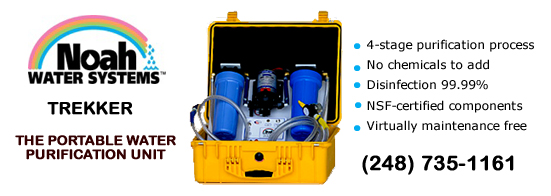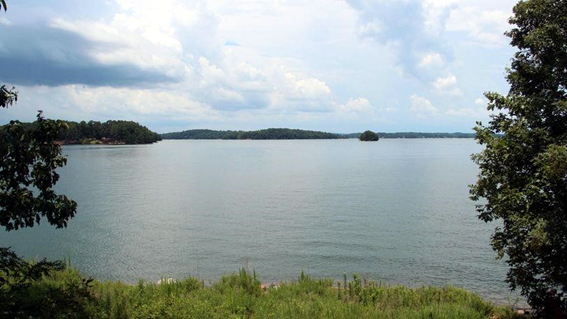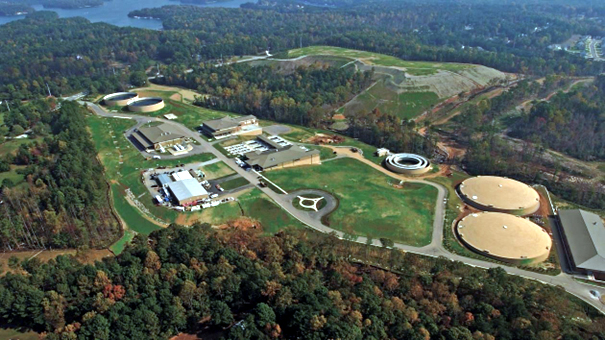WT: You are involved in many research projects. Please tell us more.
Butts: Our applied research program focuses on optimizing treatment processes, increasing reliability, and improving design performance. We collaborate with various groups, ranging from universities, other utilities, vendors, consultants and research organizations.
Our team is an integral part of the research. The team identifies and defines the problem, develops pilot and full-scale trials, and ultimately implements the results.
WT: Any pilot projects currently happening?
Butts: We are currently completing the Water Research Foundation’s (WRF) project, “Assessing the Backwash Practice on Biofiltration Operation and Performance” (WRF 5043), and performing full-scale trials for WRF’s “Understanding and Improving Reuse Biofilter During Transition from GAC to BAC”, (WRF 5092).
In April 2021, we incorporated the recommendations of WRF 5043 into our water treatment plant operations. Since implementation, we have reduced our backwash wastes by more than 100 million gallons and reduced our operating costs by more than $35,000.
WT: Any challenges with lead pipes?
Butts: Gwinnett County’s water distribution system contains no known lead pipes. The distribution system contains trace amounts of lead in solder on some older pipes and brass fittings used at meters. Since 2014, we have only used lead-free brass fittings and continue to proactively replace older pipes in our system.
WT: How are you addressing PFAS and emerging contaminants of concern?
Butts: We have completed a preliminary review of potential sources of PFAS in our service area and initiated collaborative discussions to reduce their discharge at source. In addition, we have developed a detailed test plan, scheduled to commence 2022Q4/2023Q1, to evaluate the effectiveness of our water and wastewater treatment process in removing these contaminants.
We have collaborated with universities and the Water Research Foundation to determine the removal effectiveness of our current treatment process on other emerging contaminants. We are also collaborating with other utilities that rely on Lake Lanier for their source water to improve the protection of lake water quality.
WT: Tell us about your outreach/education programs.
Butts: Gwinnett County Department of Water Resources (DWR) has a robust outreach and education program on a range of water-related topics. These include water conservation, protecting our lakes and streams, keeping harmful materials out of our sewer system, being better stewards of the environment, and taking care of home plumbing and septic systems.
We host an annual festival at the water production filter plants where we offer tours of the filter plant to show attendees the advanced water treatment process and explain all the safeguards in place to ensure the drinking water is of the highest quality.
We have hosted taste tests that demonstrate that Gwinnett Water tastes better than bottled water brands.
For conservation, we have numerous programs in place. We utilize literature to help spread the word, including indoor and outdoor conservation brochures and flyers to promote conservation programs.
We also run multiple workshops covering topics such as waterwise landscaping and fix-a-leak.
We host a virtual workshop called Homeowner H2O. The workshop covers saving water and money, fixing leaks and toilet technology.
At the in-person workshops, we offer indoor or outdoor conservation kits, as well as water-saving promotional items such as soil moisture meters and water conservation post-it notes.
The water production filter plants also host tour groups with schools, community organizations, and County programs such as Leadership Gwinnett and Gwinnett 101.
Finally, we attend various events hosted by other organizations where we offer free water with branded, reusable drinking cups and provide literature and promotional items on water quality and conservation.
WT: And for the last drop, what can you tell our viewers about a career in the water industry?
Butts: Like many industries, it has been a challenge to recruit and retain employees in the water industry. While this has been an issue for a few years now, the current competitive job market, along with many jobs offering a teleworking option has brought additional challenges in retaining staff. In addition, many dedicated, long-term employees are eligible for retirement. Thus, the industry has the added risk of losing institutional knowledge.
Gwinnett DWR offers a rewarding career for those who want to impact their community. Knowing that one is directly involved in providing clean, safe drinking water to the homes and businesses of Gwinnett County is gratifying. We value innovation and there are many opportunities for learning.
DWR is recognized nationwide as an award-winning facility. Our teams work together in an inclusive culture and do a fantastic job. The water operators have a first–hand seat to SCADA software and all the technology in place and being developed to protect our water.
We hire Operators at various levels, provide on-the-job training, and pay for additional training and licensure. We have several managers who started at level 1 and progressed.
DWR provides a sustainable career for employees to gain professional growth.
We’re always hiring! Go to www.gwinnettwaterjobs to apply.





